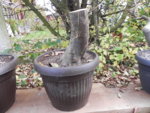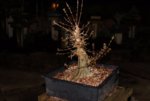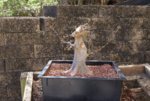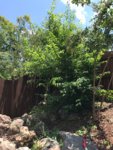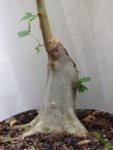You are talking about small wounds, i guess?, while i have in mind larger cuts from trunk chop, something of 4 to 5 or even more centimeters in diameter. Wounds of that size won't get closed during one summer/fall: at least 4 or 5 seasons are needed for that size of wound to completely seal, if you let your tree growing with no pruning at all. With pruning it will take much longer, i guess 10 + years? So you will get an open wound attracted by pests and diseases. While during winter there is no danger of any diseases, bugs, and wood will have time to dry out before growing season.
I guess that must be a main reason why experts recommend bigger cuts to be done during winter or when a tree is dormant, while smaller ones are left for late spring till middle summer.
Also when you do a big trunk chop, with no branches left on the trunk, the wound left behind wont even start healing before first branch would appear. So you can expect some dieback anyway.
Sifu, I think something that will help you understand this concept is identifying the difference between “healing” a scar for aesthetic purposes (where the bark grows over exposed wood) and how a tree compartmentalizes a wound inside of the wood.
Compartmentalization and the concept of CODIT, which
@0soyoung mentioned 0soscientifically, is what is important to understanding the timing of big chops. NOT the aesthetic “healing” of bark over exposed wood, which can take years to accomplish.
Compartmentalization happens much quicker and it is the process that will protect your tree from disease entering the tree. In lamens terms, it’s as if the tree is forming a protective wall INSIDE the wood, to block out pathogens and protect the wood.
Now, compartmentalization cannot happen quickly enough to protect the tree from disease, desiccation, and dieback if the chop is made while the tree is dormant for too long. So, it is not the healing of scars which takes a long time that matters here. That is always an afterthought that can be dealt with later, after the tree has had the opportunity to compartmentalize any dead wood that results from a chop.
This is why you always hear people say that when pruning a deciduous branch off of a tree... to always cut outside the “shoulder” of the branch. It is easier for a tree to quickly compartmentalize the wood at the shoulder. If you prune past the shoulder into the trunk, the tree will struggle to compartmentalize and you risk a greater wound or die back down the trunk.
To illustrate this concept, here is a picture of a trunk on an American hornbeam clump that I collected. This trunk experienced dieback on the side where there was no branch to keep sapflow going when I made the initial trunk chop at the time of collection in the early spring. I cut the trunk back to the top branch and you can clearly see where the compartmentalizion of wood occurred. Fortunately I have more branches below this point where the trunk is still fully alive that I will cut back to eventually.
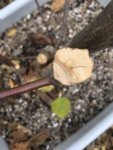

The red line shows where the tree “walled off” the ‘dead’ wood (blue) to protect the ‘living’ or viable wood (green). That is Compartmentalization, that is occurring inside the wood of your tree anytime you make a pruning decision, and that is why the timing of your pruning matters. You want to prune at a time when the tree is NOT fully dormant so that it has the ability to compartmentalize. Don’t think about healing scars, because that comes later. While it may take years to “heal” a scar, the tree compartmentalizes very quickly in comparison. And that is what will protect your tree from disease, etc.



